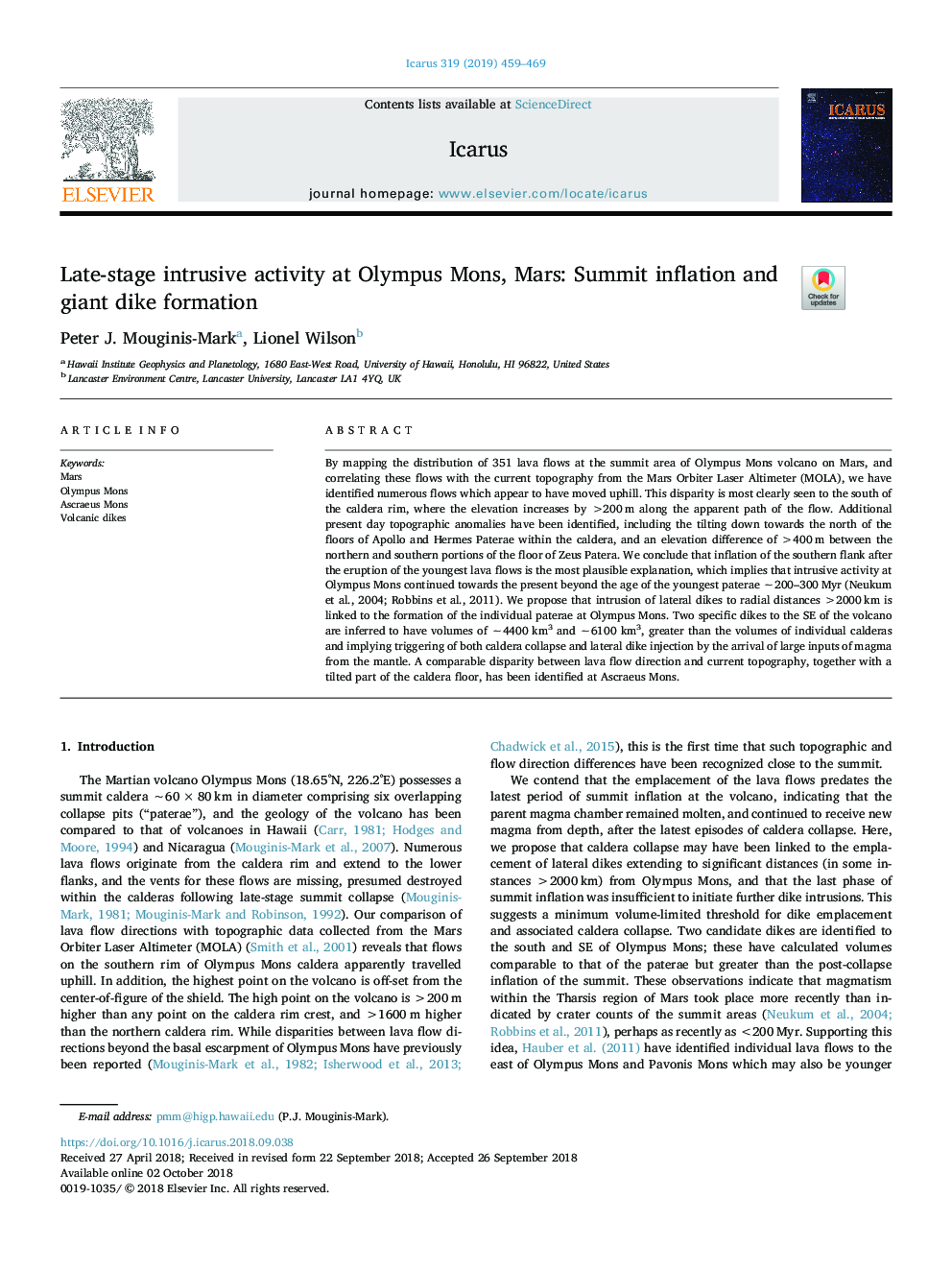| Article ID | Journal | Published Year | Pages | File Type |
|---|---|---|---|---|
| 11026377 | Icarus | 2019 | 11 Pages |
Abstract
By mapping the distribution of 351 lava flows at the summit area of Olympus Mons volcano on Mars, and correlating these flows with the current topography from the Mars Orbiter Laser Altimeter (MOLA), we have identified numerous flows which appear to have moved uphill. This disparity is most clearly seen to the south of the caldera rim, where the elevation increases by >200â¯m along the apparent path of the flow. Additional present day topographic anomalies have been identified, including the tilting down towards the north of the floors of Apollo and Hermes Paterae within the caldera, and an elevation difference of >400â¯m between the northern and southern portions of the floor of Zeus Patera. We conclude that inflation of the southern flank after the eruption of the youngest lava flows is the most plausible explanation, which implies that intrusive activity at Olympus Mons continued towards the present beyond the age of the youngest paterae â¼200-300â¯Myr (Neukum et al., 2004; Robbins et al., 2011). We propose that intrusion of lateral dikes to radial distances >2000â¯km is linked to the formation of the individual paterae at Olympus Mons. Two specific dikes to the SE of the volcano are inferred to have volumes of â¼4400 km3 and â¼6100 km3, greater than the volumes of individual calderas and implying triggering of both caldera collapse and lateral dike injection by the arrival of large inputs of magma from the mantle. A comparable disparity between lava flow direction and current topography, together with a tilted part of the caldera floor, has been identified at Ascraeus Mons.
Keywords
Related Topics
Physical Sciences and Engineering
Earth and Planetary Sciences
Space and Planetary Science
Authors
Peter J. Mouginis-Mark, Lionel Wilson,
